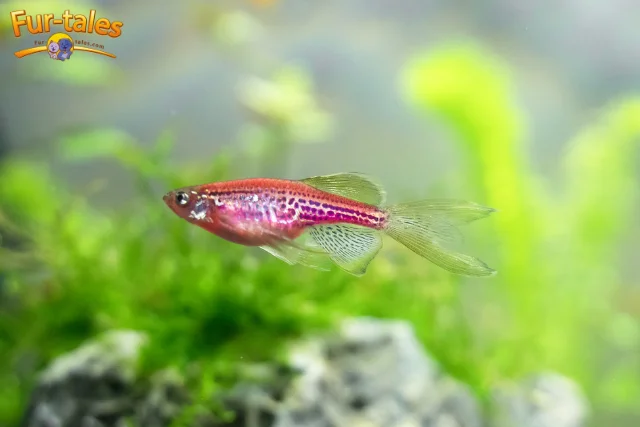
Easy-to-Care-For Fish Species That Thrive in Home Aquariums
Setting up your first home aquarium is an exciting journey. Whether you’re a new pet owner, a parent introducing kids to their first pet, or someone looking to add a peaceful element to your living space, fish make wonderful companions. They’re quiet, beautiful to watch, and, with the right species, relatively easy to care for. But not all fish are created equal—some are much more beginner-friendly than others.
This guide is designed to help you discover easy-to-care-for fish species that thrive in home aquariums. We’ll walk you through the best options for beginners, tips to set up a thriving tank, and some common mistakes to avoid.
Why Choose Easy Fish Species for Your Home Aquarium?
Starting simple ensures your aquarium experience is enjoyable, not overwhelming. Choosing hardy, low-maintenance fish helps build confidence as you learn the basics of aquarium care—like feeding, water quality, and tank maintenance. These species are also more forgiving of the small mistakes every beginner makes.
Common benefits of beginner-friendly fish:
- Tolerant of minor water fluctuations
- Easy to feed and care for
- Social and visually engaging
- Affordable and widely available
Best Easy-to-Care-For Fish Species
1. Betta Fish (Betta splendens)
Why they’re great: Betta fish are among the most popular beginner species. They are beautiful, come in a variety of colors, and require minimal space.
Care highlights:
- Tank size: At least 5 gallons
- Temperament: Territorial; males should be kept alone
- Water temp: 76-82°F
- Feeding: Once or twice daily with pellets or frozen food
Pet health checklist tip: Always check water temperature and cleanliness—bettas are sensitive to dirty or cold water.
2. Zebra Danios (Danio rerio)
Why they’re great: These small, active fish are social and resilient, making them ideal for community tanks.
Care highlights:
- Tank size: 10 gallons or larger
- Temperament: Peaceful and schooling
- Water temp: 64-75°F
- Feeding: Flake food or micro pellets
First vet visit guide for fish? Not needed—but do establish a relationship with a local pet store or aquatic specialist for guidance.
3. Platies (Xiphophorus maculatus)
Why they’re great: Platies are colorful, easy-going fish that adapt well to various conditions. They are livebearers, meaning they give birth to free-swimming young, which can be fascinating for families.
Care highlights:
- Tank size: 10 gallons minimum
- Temperament: Friendly; good for community tanks
- Water temp: 70-82°F
- Feeding: Flakes, frozen, or live food
New pet owner tips: If you don’t want baby fish, keep only one gender or consult the pet store for guidance.
4. Corydoras Catfish
Why they’re great: These peaceful bottom-dwellers help keep the tank clean by scavenging leftover food. They do best in groups of 3 or more.
Care highlights:
- Tank size: 15 gallons and up
- Temperament: Calm, social, bottom feeders
- Water temp: 72-78°F
- Feeding: Sinking pellets, algae wafers
Pet health checklist: Add soft substrate like sand to protect their delicate barbels (whiskers).
5. Guppies (Poecilia reticulata)
Why they’re great: Guppies are colorful, playful, and very easy to care for. Like platies, they’re livebearers and reproduce quickly.
Care highlights:
- Tank size: 10 gallons minimum
- Temperament: Peaceful and active
- Water temp: 72-82°F
- Feeding: Flake food, frozen brine shrimp
First vet visit guide tip: Always quarantine new fish before adding them to a tank to prevent disease spread.
6. Neon Tetras (Paracheirodon innesi)
Why they’re great: These tiny fish are visually stunning with their bright blue and red stripes. They do best in groups and enjoy a calm tank environment.
Care highlights:
- Tank size: 10 gallons or more
- Temperament: Peaceful and schooling
- Water temp: 70-81°F
- Feeding: Micro pellets or flakes
New pet owner tips: Keep them in schools of six or more for their well-being.
7. Cherry Barbs (Puntius titteya)
Why they’re great: Cherry barbs are easy to care for, colorful, and peaceful when kept in schools. They’re less nippy than other barbs.
Care highlights:
- Tank size: 15 gallons+
- Temperament: Peaceful when in groups
- Water temp: 73-81°F
- Feeding: Flakes, freeze-dried, live foods
Pet health checklist tip: Use plants and hiding spots to mimic natural environments and reduce stress.
Tips for Setting Up a Beginner-Friendly Aquarium
Choose the Right Tank Size
Smaller tanks are tempting, but they can be harder to manage because water parameters change quickly. A 10- to 20-gallon tank is ideal for beginners.
Invest in a Good Filter and Heater
Stable water quality and temperature are key to keeping fish healthy. Choose equipment that matches your tank size and species requirements.
Cycle the Tank First
Before adding fish, “cycle” the tank to build beneficial bacteria. This process helps break down fish waste and keeps the water safe.
Don’t Overstock
Start with a few fish and add more gradually. Too many fish at once can overload your filter and stress your fish.
Regular Maintenance
Test water weekly, do partial water changes, and clean the tank glass and decorations as needed.
Common Beginner Mistakes to Avoid
- Adding fish too soon: Always cycle your tank first.
- Overfeeding: Leads to dirty water and sick fish.
- Mixing incompatible species: Research before mixing fish.
- Neglecting water testing: Use test kits to monitor ammonia, nitrites, nitrates, and pH.
FAQs
Q: How many fish can I put in my tank? A: A general rule is one inch of adult fish per gallon of water, but this varies by species. Always research specific needs.
Q: How often do I need to feed my fish? A: Once or twice a day. Feed only what they can consume in 2-3 minutes.
Q: Do fish need a filter and heater? A: Yes. Filters keep water clean, and heaters maintain a stable temperature, especially for tropical fish.
Q: Are goldfish good beginner fish? A: While hardy, goldfish require large tanks and produce a lot of waste. They’re better suited for slightly more experienced owners.
Q: Can I mix different fish species? A: Yes, but only peaceful species with similar water needs. Always consult a pet store or aquarium expert.
Q: What is tank cycling and why is it important? A: Tank cycling is the process of building beneficial bacteria that break down waste. It’s crucial for keeping your fish healthy.
Image Designed Using Canva
